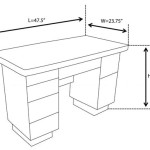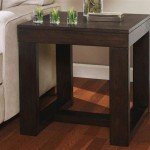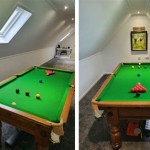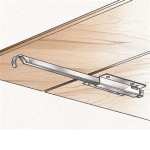The Enduring Appeal of the Counter Height Farm Table
The counter height farm table represents a fascinating intersection of rustic charm and modern functionality. Originating from the practical needs of agricultural life, the farm table, traditionally a long, sturdy surface for meal preparation and family gatherings, has undergone an evolution to meet contemporary lifestyle demands. The counter height variation specifically addresses the needs of smaller spaces, informal dining, and the desire for a more interactive and social kitchen environment. Its elevated height provides a unique vantage point and promotes ease of use for various tasks, solidifying its position as a desirable piece of furniture in today's homes.
This article will delve into the characteristics, benefits, and considerations associated with selecting a counter height farm table. The focus will be on providing a comprehensive understanding of this furniture piece, allowing potential buyers to make informed choices that align with their individual needs and aesthetic preferences. The discussion will cover design elements, material options, functional advantages, and spatial considerations, offering a holistic perspective on the counter height farm table.
Design and Construction of Counter Height Farm Tables
The defining characteristic of a farm table, irrespective of height, lies in its simplicity and durability. The construction typically involves a solid wood tabletop, often featuring visible wood grain and knots, adding to its rustic appeal. Common wood choices include pine, oak, maple, and reclaimed wood. Pine is often chosen for its affordability and rustic appearance. Oak provides superior durability and a classic aesthetic. Maple is a harder wood, resisting scratches and dents, making it ideal in high-traffic areas. Reclaimed wood, sourced from barns, factories, or old buildings, boasts unique character and contributes to sustainable practices. The wood is often finished with a protective coating, such as varnish, polyurethane, or oil, to enhance its durability and resistance to spills and stains. The finish also affects the overall aesthetic, with options ranging from matte to glossy, and natural to stained or painted.
The legs of a counter height farm table contribute significantly to its stability and design. Traditional farmhouse designs feature sturdy, often turned or square legs, while more contemporary interpretations may incorporate metal legs for an industrial chic aesthetic. The legs are typically attached to the tabletop using mortise and tenon joints or sturdy metal brackets, ensuring a robust and long-lasting connection. Some designs include a stretcher, a horizontal support connecting the legs, which further enhances stability. The height of the legs is crucial in defining the "counter height" designation, typically ranging from 34 to 36 inches, aligning with standard kitchen counter height. This allows for the use of counter stools, promoting an informal and comfortable seating arrangement.
Beyond the basic structure, counter height farm tables can incorporate various design elements to enhance their functionality and visual appeal. These include drawers for storage, drop-leaf extensions for increased surface area, and built-in shelves for displaying decorative items. The addition of these elements transforms the table from a simple dining surface into a multi-functional piece of furniture, suitable for meal preparation, homework, and casual gatherings. The design can also be customized with different edge profiles, such as a live edge for a natural look, or a beveled edge for a more refined appearance. The choice of hardware, such as knobs and pulls for drawers, also plays a role in defining the overall style, with options ranging from antique brass to modern stainless steel. Ultimately, the design and construction of a counter height farm table must balance aesthetic considerations with practical functionality to create a piece of furniture that is both beautiful and useful.
Benefits of the Counter Height Design
The counter height design of a farm table offers several advantages over traditional dining tables. One of the primary benefits is its ergonomic advantage. The elevated height allows for a more comfortable posture when standing or sitting on counter stools, reducing strain on the back and legs. This is particularly beneficial for individuals who spend extended periods preparing food or working at the table. The higher surface also makes it easier to reach items placed on the table, minimizing the need to bend or stretch.
Another significant advantage is its versatility in spatial planning. Counter height tables are particularly well-suited for smaller spaces, as they can double as a kitchen island or breakfast bar. In open-concept living areas, a counter height farm table can serve as a visual divider between the kitchen and living room, creating a distinct yet connected space. The elevated height also provides a better vantage point, allowing for a more social and interactive experience. This is especially useful when entertaining guests, as people can easily converse whether they are sitting or standing around the table.
Furthermore, the counter height design can enhance the aesthetic appeal of a kitchen or dining area. The elevated table creates a more casual and inviting atmosphere, encouraging informal gatherings and relaxed meals. The height also allows for better visibility of decorative items placed on the table, such as centerpieces or flower arrangements. The use of counter stools adds another layer of visual interest, with a wide range of styles and materials available to complement the overall design. From sleek and modern metal stools to rustic wooden stools, the seating options are virtually limitless, allowing for a personalized and cohesive look. The counter height farm table, therefore, not only offers practical benefits but also contributes to the overall ambiance and style of the living space.
Considerations When Choosing a Counter Height Farm Table
Selecting the right counter height farm table requires careful consideration of several factors, including size, material, style, and budget. The size of the table should be proportionate to the available space and the number of people who will typically use it. It is essential to measure the area where the table will be placed and consider the space needed for chairs or stools. A table that is too large can overwhelm a small room, while a table that is too small may not provide adequate surface area for its intended purpose. The number of people who will typically use the table should also be factored into the size selection. A larger table may be necessary for families or individuals who frequently entertain guests.
The material of the table is another crucial consideration, as it affects its durability, appearance, and maintenance requirements. Solid wood is a popular choice for farm tables due to its strength, durability, and natural beauty. However, solid wood can be more expensive than other materials, such as wood veneer or laminate. The choice of wood species also affects the table's appearance and durability, with options ranging from softwoods like pine to hardwoods like oak and maple. Wood veneer, a thin layer of wood glued to a substrate, offers a more affordable alternative to solid wood while still providing a similar aesthetic. Laminate, a synthetic material bonded to a substrate, is a highly durable and low-maintenance option, but it may not have the same warmth and character as wood. The choice of material should be based on a balance of aesthetic preferences, budget constraints, and practical considerations.
Finally, the style and overall design of the table should complement the existing decor of the room. Farm tables are available in a wide range of styles, from traditional farmhouse to modern industrial. A traditional farmhouse table typically features a simple, rustic design with turned legs and a natural wood finish. A modern industrial table may incorporate metal accents and a darker finish. The style of the table should be consistent with the overall aesthetic of the room to create a cohesive and harmonious look. It is also important to consider the color and finish of the table in relation to other furniture and accessories in the room. A table with a contrasting color or finish can add visual interest, while a table with a similar color and finish can create a more unified look. Careful consideration of these factors will ensure that the chosen counter height farm table is both functional and aesthetically pleasing.

High Top Bar Table For Restaurant Counter Height Rectangle Reclaimed Wood With A Frame Legs Farmhouse Dining

Copeland Furniture Natural Hardwood From Vermont Modern Farmhouse Counter Height Farm Table In Walnut
Jordan Counter Height Dining Table Set Costco

6 Piece Counter Height Solid Wood Dining Room Set With Storage Shelf Rustic Farmhouse Kitchen Table Bench And 4 Chairs 30 X 60 Rectangle Espresso Beige Cushion Com

Havalance Round Counter Height Dining Table And 4 Barstools White

5 Pcs Counter Height Wood Dining Table Set Console With Trestle Legs And 4 Stools Black Modernluxe Target

5 Piece Counter Height Dining Table Set Farmhouse Room With Drop Leaf Tabletop And Metal Frame Industrial Kitchen Bar 4 Chairs Footrest Space Saving Black Brown Com

Solid Wood Farmhouse Counter Height Square Dining Table Pub Crafters And Weavers

Diy Counter Height Farmhouse Trestle Table Recipe Dining Room Tables

Hanshe 6 Piece Counter Height Dining Table Set Modern Farmhouse With Bottom Shelf Wooden Bench And 4 Chairs For Room Apartment Gray Com








